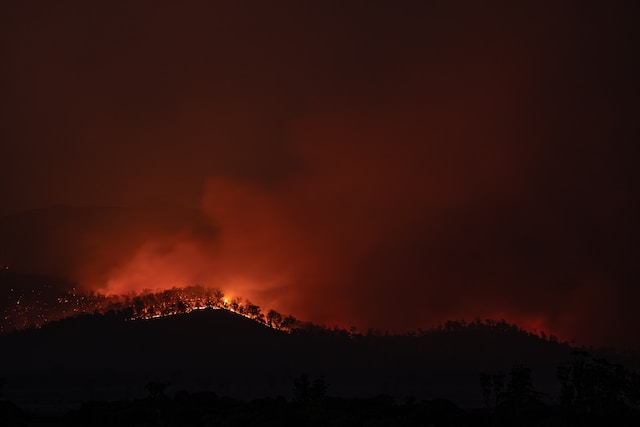Australians are being warned against complacency about bushfires as parts of the country enter a danger period months ahead of the season’s official start date.
Hundreds of NSW Rural Fire Service firefighters were deployed to tackle multiple blazes in the state’s north over the weekend and 12 fires remained uncontained as of Monday afternoon.
Warm and windy conditions coupled with prolific grass growth fuelled the fires and sparked concerns within the service about the upcoming season.
Six council areas in northern NSW have already entered the bushfire danger period, which will apply to the rest of the state from October 1.
NSW RFS spokeswoman Angela Burford said Australia was starting to experience longer bushfire seasons and prolonged risks.
Due to tricky weather conditions this year, hazard reduction burns were also behind schedule.
Ms Burford said that was the case across much of the east coast, where incessant rain followed by warm conditions made it difficult to undertake important mitigation measures.
“There are things we can do rail, hail or shine, but that hazard reduction burning is the most effective tool and it’s quite frustrating when we can’t do it,” she told AAP.
The RFS has been thinking outside the box to address excessive growth, including a successful trial placing goats in some areas to chew their way through excess growth.
While a catastrophic season like the black summer of 2019/20 isn’t anticipated, significant grass growth in multiple areas poses a threat.
Ms Burford is particularly worried about bushland in the Greater Sydney region untouched by the black summer fires in 2019/20.
The northern and southern hemisphere summer fire seasons were also overlapping, which meant Australian firefighters were still helping in places like Canada as blazes simultaneously broke out at home.
But Ms Burford said she was concerned communities had become complacent about fire preparation after battling other disasters like floods.
“It is hard to contemplate a busy bushfire season when all we’ve seen in the last few years is flooding, but it is very important people take the time to prepare themselves and their properties,” she said.
This included having a bushfire survival plan, preparing homes and properties and knowing the level of risk in different areas.
UNSW Canberra bushfire dynamics expert Jason Sharples said it would most likely take more than one season for vegetation to dry out sufficiently to cause intense fires.
But he warned grassland areas would be more of a risk this summer given they had also grown excessively due to rainfall.
Australia is expected to enter a hot and dry El Mino weather pattern, which Professor Sharples says poses a threat for future bushfire seasons.
“El Nino conditions don’t necessarily mean we will have a worse bushfire season, though it does mean we’re more likely to have hotter temperatures, less rainfall and dry conditions that can lead to destructive fires,” he said.
“Instead of being hit hard this year, we may see the impacts of El Nino accumulate and combine with climate change in the next season and the ones following.”
Maeve Bannister
(Australian Associated Press)





